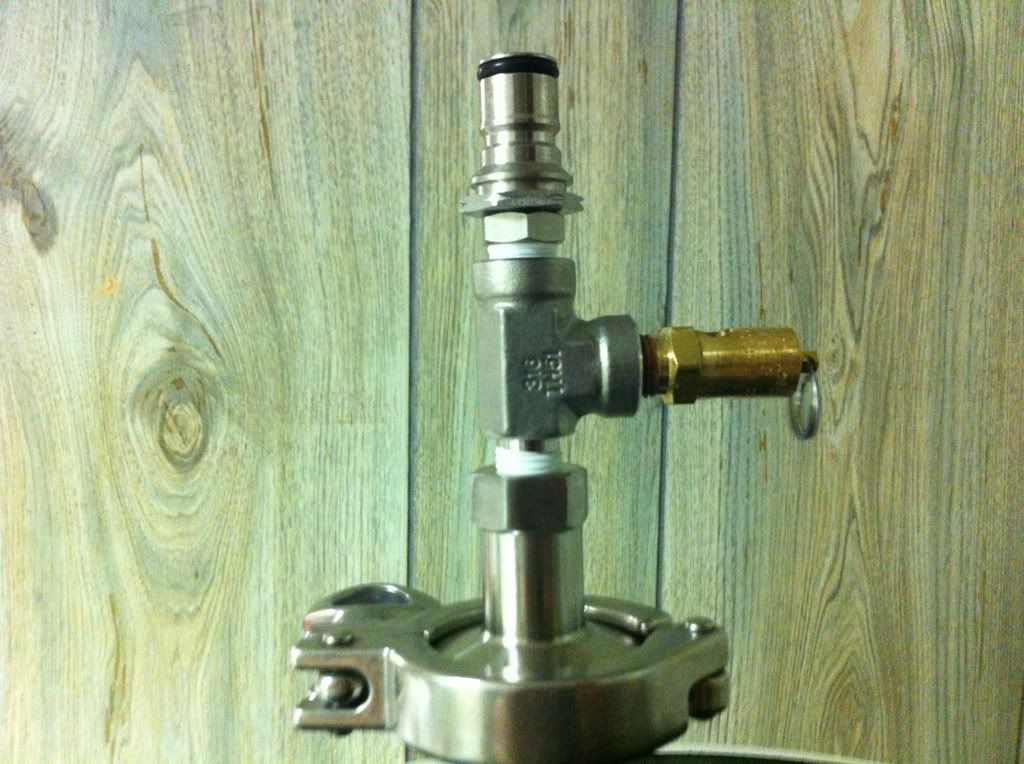@Neopol: Your decision to do your yeast collection after the butterfly rather than before it intrigues me. Was it simply a matter of space constraint, or did you have something more specific in mind?
My setup is catcher->butterfly, I do an initial trub dump, then harvest, then rack, all off the bottom in my configuration.
Well after seeing that the trub flowed out like drywall mud when draining it off (but when it breaks it flows), I figured that using the sightglass would let me make a little less of a mess when I purge the trub.
So my process is once I get to my target gravity and plan to rack it off.
I purge the trub, close the valve when I see the buttery colored yeast start into the glass.
Remove, dump, clean, sanitize, reassemble and install end cap loosely to purge air out rather than into your tank.
Open butterfly and collect one cylinder of "Middle Layer" yeast, and pour into a flask for washing/harvesting.
Reassemble and drain the rest of the yeast off for dumping (this is at least a quart or more of yeast and trub on 20+ gal).
(This is the hard part it requires...P..A..T..I..E..N..C..E..)
Clean and reassemble and let it rest for a couple more days to continue floccing and allow what may have stirred up to settle again before moving the process to to racking arm alone.
You have a little less moving parts, its all about what works for you and your process.
The above takes me about 15-20 Minutes on a Wed night for a Sat racking.
Hope that helps! Sorry if its overly wordy.
@Neopol - Where did you get your cart from?
Amazon, it is 18 x 24 with a basket, handle and casters I dont recall the brand but there was only a couple options that were reasonable about $80. Very convenient to move 200lbs of liquid around and for cleaning, different ferm-temps etc...next project is to figure out an exterior pex tubing jacket or internal SS coil for isolated temp control.

@Neopol - Thanks a ton. Really appreciate the setup info!!
Sir, you are very welcome!
I owe a big thanks goes to all those who worked, innovated and shared ideas from the beginning of the thread.
It is truely amazing how well an open source of idea sharing can work to the benefit of many .. now if only our congress would quit throwing sand and crapping in the sandbox and cooperate...I know wishful thinking...
In Beer We Trust!




 :rockin:
:rockin: 

